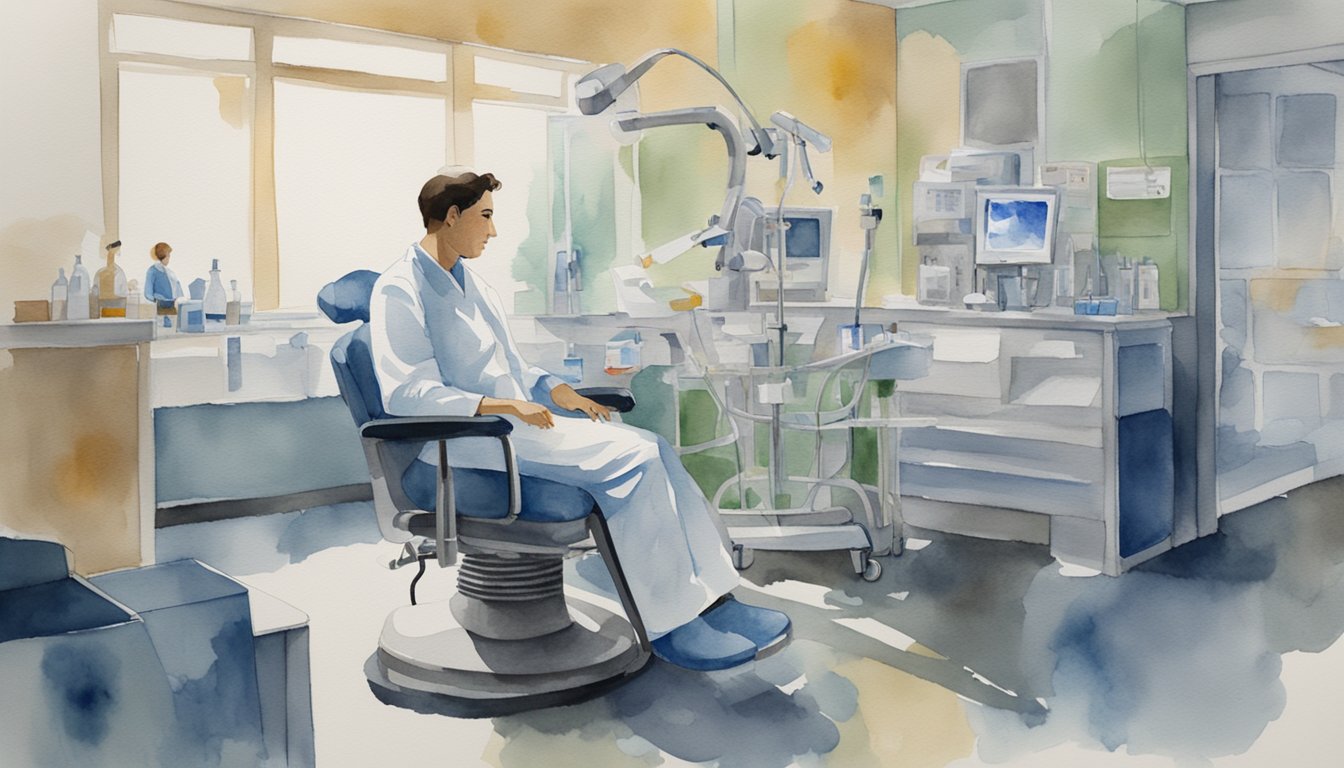Selling plasma has become a way for individuals to supplement their income while contributing to a greater cause. Plasma, the liquid portion of your blood, is critical for carrying blood cells and is used in a variety of medical treatments. The earning potential can vary, but generally, you can expect to receive between $30 and $60 per donation. Factors that impact compensation include the frequency of donations, the donor’s weight, and the policies of the donation center.
The process of donating plasma is similar to donating blood, involving a health screening and the use of a machine to separate plasma from other blood components. The extraction is usually completed within an hour or two, and your body can replenish the plasma within 48 hours, permitting you to donate twice a week at most centers. Choosing a reputable donation center is essential for a safe and pleasant experience. It’s also important to understand that regulations may vary by location, ensuring the safety and legality of the plasma donation process.
Key Takeaways
- Compensation for plasma donation can range from $30 to $60 per session.
- The donation process includes a health screening and is generally completed in a couple of hours.
- Safety and legality are ensured through regulated donation centers.
Understanding Plasma and Its Importance

When you think of donating blood, you might envision saving lives in trauma situations, but your donated plasma plays a crucial role too, touching lives in varied and vital ways.
Plasma Composition and Functions
Blood plasma is the pale-yellow liquid component of your blood that holds your blood cells in suspension. It constitutes about 55% of your total blood volume and is composed mainly of water, 90%, with the remaining 10% consisting of essential proteins, salts, lipids, and glucose. This fluid is critical for carrying various substances, such as:
- Blood Cells: Red blood cells, white blood cells, and platelets
- Proteins: Albumin, clotting factors, and immunoglobulins
- Nutrients: Such as glucose and electrolytes
Your plasma functions range from maintaining blood pressure and volume to supplying critical proteins for blood clotting and fighting diseases.
Plasma in Medical Treatments
Plasma plays a pivotal role in the treatment of a variety of medical conditions. Particularly, it is used to create therapies for individuals suffering from immune deficiencies, bleeding disorders, and other critical conditions. These therapies rely on proteins and antibodies derived from plasma to help bolster the patient’s immune system or aid in clotting.
Health Benefits of Donating Plasma
By donating plasma, you are not only contributing to life-saving treatments for others, but you may also benefit from increased psychological wellbeing by fulfilling a sense of altruism. Additionally, some studies suggest that the process of donating plasma can help reduce the high levels of certain proteins, potentially having a positive impact on your blood viscosity and circulation.
Eligibility and Safety
Deciding to donate plasma is a generous act that can help save lives, but it’s important to know if you’re eligible to donate and understand the safety measures involved. We’re going to walk through who can donate, what health screenings are in place, and how to handle any possible side effects effectively.
Who Can Donate Plasma
To donate plasma, you must typically be 18 years of age or older and weigh at least 110 pounds. Being in good health is crucial; this means feeling well and being able to perform normal activities. For those under 18, parental consent might be a requirement, depending on your location.
Health Screening Protocols
Before you donate, you’ll undergo a health screening to ensure your eligibility. This usually includes a medical exam and a review of your medical history. You’ll be tested for transmissible viruses such as HIV and hepatitis to protect both your health and the well-being of patients who receive your plasma.
Possible Side Effects and How to Mitigate Them
After donating plasma, some donors may experience side effects such as lightheadedness, dizziness, or bruising at the needle insertion site. To mitigate these side effects, it’s recommended to stay hydrated, avoid alcohol before and after donation, and eat a healthy meal prior to your appointment. If any side effects persist, consult with a medical professional.
The Plasma Donation Process
https://www.youtube.com/watch?v=Qf6a-pyKXDE&embed=true
Engaging in plasma donation can be both a noble act to help others and a way to earn extra income. The process, known as plasmapheresis, is broken down into stages to ensure your safety and comfort throughout. Here’s what you can expect.
Before Donation
Before you donate plasma, it’s essential to hydrate well and eat a healthy meal avoiding fatty foods. Ensure you have your ID, proof of address, and Social Security card for your first visit. It’s recommended to get a good night’s sleep prior to the procedure to minimize the risks of dizziness or lightheadedness.
During the Donation
The plasmapheresis process typically takes 60 to 90 minutes. Initially, a nurse or technician will check your vitals and assess your health status. During the donation, a small amount of blood is drawn, the plasma is separated, and the remaining components are returned to your body. It’s crucial to stay relaxed, inform the staff if you feel unwell, and avoid moving the arm being used for the donation to reduce the risk of bruising.
Aftercare for Donors
Post-donation, rest at the facility briefly to ensure you’re feeling well before leaving. Drink plenty of fluids and avoid alcohol or caffeine to prevent dehydration. Any minor bruising at the puncture site is normal, but watch for signs of infection. Wait for the recommended time period—usually 48 hours—before donating plasma again.
Financial Aspects of Donating Plasma
https://www.youtube.com/watch?v=qri7ZCBMYEQ&embed=true
When you consider donating plasma for money, it’s essential to understand how the financial elements work. From the way payments are issued to how it can affect your taxes, let’s explore what you need to know about the compensation involved.
How Payment Works
Most plasma centers, like Octapharma Plasma, often compensate you with funds loaded onto a prepaid debit card. This debit card is typically given after each donation session. You can expect to earn around $30 to $60 per donation, with some centers offering incentives that might push that amount closer to $100 per donation.
Impact on Taxes
As a plasma donor, keep in mind that compensation counts as income, which means the IRS may be interested in it. You’ll likely receive a 1099 form if you earn above a certain amount, and it’s your responsibility to report these earnings when filing your taxes.
Maximizing Earnings with Frequent Donations
To make money consistently as a side activity, consider regular donations. Donation centers often have programs that offer more extra cash to frequent plasma donors. These programs could significantly increase your monthly earnings, allowing you to potentially make between $360 to $1,000 monthly depending on the center’s pay structure and how often you donate.
Choosing the Right Donation Center
When looking for a place to donate plasma, compare different centers and consider donor reviews to ensure a positive experience and fair compensation.
Comparing Plasma Centers
Location and Convenience: Check how close plasma donation centers are to your home or work. Facilities like the American Red Cross and Grifols often have multiple centers, making it easier to find a location that suits your schedule.
Compensation: You’re likely interested in how much you can earn. Places like BioLife Plasma Services and Octapharma can offer compelling incentives for new donors, with potential earnings of up to $600 in your first month, according to some centers.
-
Payment Method: Many centers provide compensation through a debit card system, such as the one offered by BioLife, which is convenient and widely accepted.
-
Frequency of Donation: Most donation centers allow you to donate up to twice per week, but they require a waiting period between donations for safety reasons. Be sure to check this policy as it will affect your earning potential.
Health and Safety Standards: High standards are crucial. Plasma centers like Biomat take precautions to ensure donor safety, which is a critical factor in choosing a center.
Donor Experiences and Reviews
Reputation: Before making a decision, research reviews from other donors. Look for feedback on the staff’s professionalism, the center’s cleanliness, and the overall experience.
- Donor Comfort: Your comfort during the donation process matters. Comfortable seating, a clean environment, and a friendly staff—often highlighted in reviews—can significantly improve your donation experience.
Efficiency: Time is valuable. Previous donors often share insights into the wait times and efficiency of the donation process, which can help you pick a center that respects your time.
Supportive Staff: A friendly and supportive staff makes a difference, especially if you’re new to plasma donation. Locations under the umbrella of BioLife Plasma Services are known for prioritizing donor care and support.
Remember, your choice of plasma donation center can impact not just the compensation you receive but also how pleasant and stress-free your donation experience is. Take your time to compare and choose wisely.
Regulations and Legalities
Before you consider selling plasma, it’s important to be aware of the regulations and legalities set by the FDA, as well as the state-specific requirements you need to meet. This ensures that your experience is conducted safely and legally.
FDA Guidelines for Plasma Donation
The Food and Drug Administration (FDA) places significant emphasis on the safety of both donors and recipients in the plasma donation process. Your eligibility to donate plasma is governed by FDA regulations which include:
- Licensure: Donation centers must have proper licensure to operate and collect plasma.
- Health Screening: You must undergo a thorough health screening to determine your suitability for plasma donation.
- Frequency of Donations: You are limited to donating no more than twice within a seven-day period.
These guidelines help maintain the quality and safety of plasma collected, ensuring that it can be used for medical treatments effectively.
State Laws and Requirements
Each state may impose additional legal requirements for plasma donation. These may include:
- Proof of Residency: Some states require you to provide proof of residency as a condition for donating plasma.
- Identification: You are typically required to present a valid form of ID, such as a driver’s license or a social security card, prior to donation.
Adherence to state laws ensures that the process is consistent with local regulations and protects both your rights as a donor and the integrity of the plasma collected.
Additional Considerations
https://www.youtube.com/watch?v=GRoJ3FxG-q4&embed=true
When you decide to sell plasma, it’s not just about how much money you can make. There are several other factors to consider that affect the process and your earnings.
Donation Frequency and Health
Your health and how often you can donate are vital factors. Typically, you can donate up to twice per week provided there is a one-day gap between donations. Your schedule must allow for this frequency without impacting your health. It’s crucial to maintain good health not just for eligibility but also because donating too often can take a toll on your body. For individuals with rare diseases, donating plasma can be more than just a way to earn money; it’s a chance to contribute to vital therapies.
Community and Ethical Aspects
When you sell plasma, you contribute to a larger cause. Your donations are processed to treat individuals with immune deficiencies and other conditions. The ethical aspect of plasma donation is also worth considering; you’re earning money, but you’re also supporting a system that aids people with chronic illnesses.
Understanding Compensation Promotions
Different centers may offer various promotions to attract donors. This could mean extra cash for new donors or bonuses during certain times. It’s important to read the fine print and understand how these promotions affect your compensation. While promotions can significantly increase your earnings, they’re often time-limited or require a specific donation frequency.
Remember, your time and health are just as important as the financial compensation you receive for donating plasma.
Related Opportunities and Alternatives
Exploring opportunities similar to selling plasma can further enhance your earnings and impact. Below, you’ll find alternative ways to contribute valuable biological materials and explore diverse side gigs to supplement your income.
Donating Other Bodily Components
While selling plasma offers a way to earn some cash, you may also consider donating eggs or sperm, which can be a more involved process but might offer higher compensation. Donating eggs typically involves rigorous screening and medical procedures but can compensate you thousands of dollars per donation. Sperm donation, on the other hand, requires less invasive procedures, and while the pay per donation is generally less than egg donation, it can be a more frequent opportunity.
Other Side Gigs and Earnings
If you’re looking for additional ways to boost your income, consider a variety of side gigs. Many people earn extra money by:
- Driving for rideshare services
- Freelance work, like writing, graphic design, or coding
- Participating in online surveys or studies
- Pet sitting or dog walking
These gigs can offer flexible scheduling and the potential for a decent side income. Just like when you sell plasma, these earnings can vary based on time invested and the demand for the service you’re providing.









